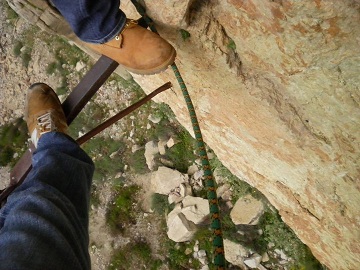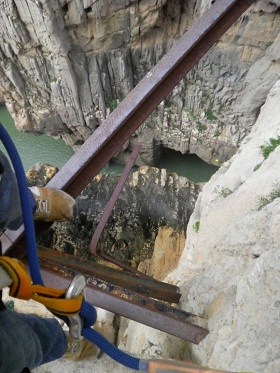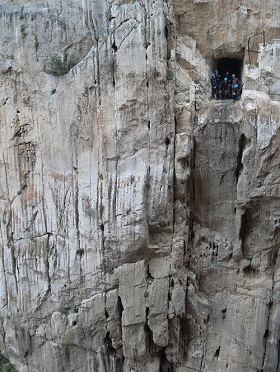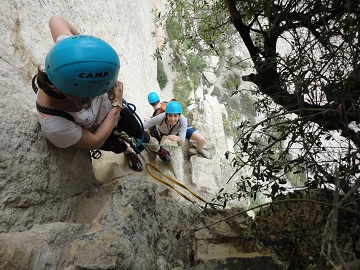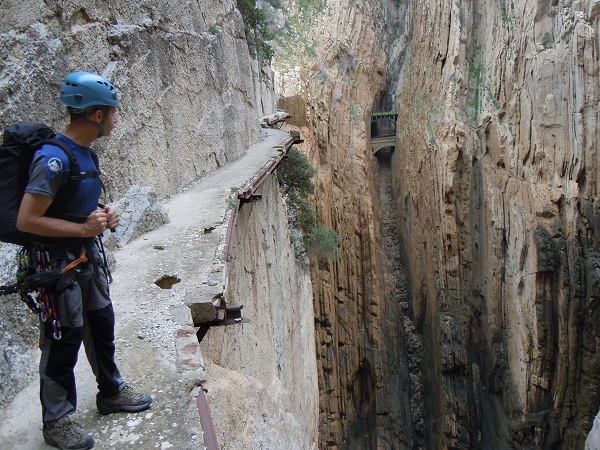
Nowhere to go but forward. All images by the author.
IF YOU’VE HEARD OF the Caminito del Rey in Málaga, Spain, it is probably because it’s often referred to as “The World’s Most Dangerous Walkway.” It is blogged about from afar, with pictures taken from what seem to be impossible angles by death-wishing photographers. To trek it, you imagine yourself cringing or flattening yourself against the wall like a living shadow.

